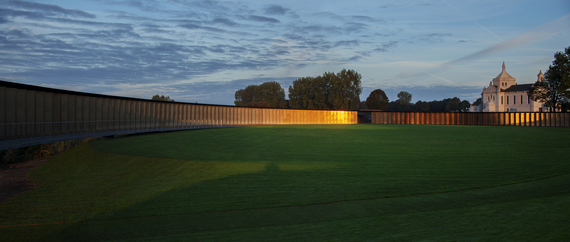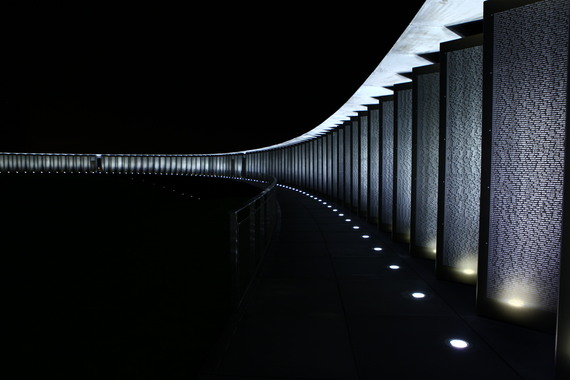Most monuments that commemorate the memory of war dwell on glory--glory won, glory lost, and the sacrifices made by the patriot sons.
As this year ends, a century after the beginning of The Great War (World War I), memorial ceremonies have sprouted like poppies across Europe's northern landscapes. The Great War, whose memory has all but disappeared in the U.S., was the bloodiest of the last century. Seventeen million died as the last gasp of European colonialism confronted the new nationalism launched by Germany. Many of the French and British victims were snatched from the two nations' colonies in Africa and the Middle East, then dispatched to the frontlines for slaughter in the trenches. That forms a part of the Arab memory that helps nourish today's fanatical killing sprees.
Last spring, as the memorials cranked up, what could have been an all-out or even nuclear conflict hovered between Vladimir Putin's increasingly desperate and reactionary Russia and its former stepchild, Ukraine, financed by the left-overs of American Cold War policies and funding. The outcome there is far from resolved but it's one reason why the stunning circular memorial an hour north of Paris at Notre-Dame de la Lorette ought to be on any visitor's essential list. It is not about glory, nor is it about patriotism or even especially about sacrifice.
Architect Philippe Prost (also known for his renovation of the former French mint, now a museum of contemporary art) chose to create a great circle called The Ring of Memory, symbolizing continuity and persistence on the rolling pastureland with the names of 570,606 slaughter victims etched into the stainless steel structure. At its most optimistic the circle of memory commemorates the human capacity to remember. In another sense it is an indelible reminder of the endless circularity of war. The Great War, in the propaganda of its era, was promoted as the war to end all wars--never mind that it was the second of three wars marking the ferocity of the nationalist dream in the recently unified German state.
The visitor walks in, under, through or around the outside of The Ring of Memory and is at once captivated and lost in the circle of death. Nothing in Washington, and particularly not the Vietnam Memorial with its victims also inscribed on the stone, remotely compares. For the maximum effect arrive early in the morning or just at sunset and try neither to speak nor to cry.
Photo Philippe Prost, architecte/AAPP©adagp, 2014 ©Aitor ORTIZ 2014

